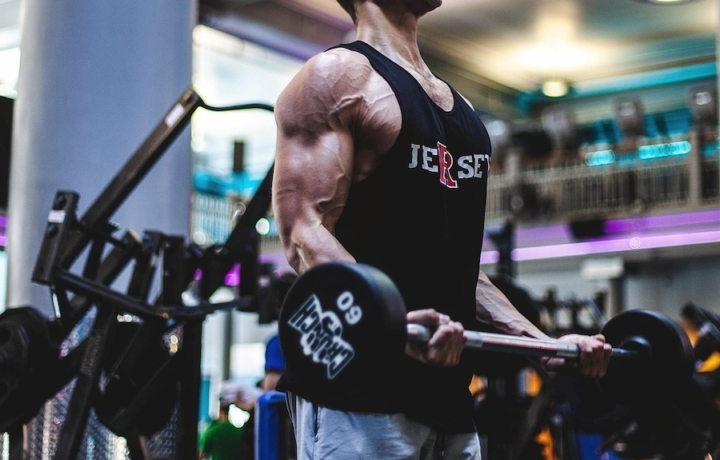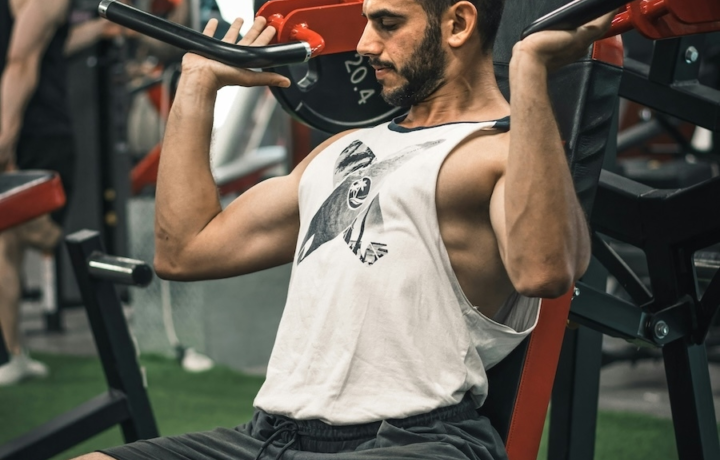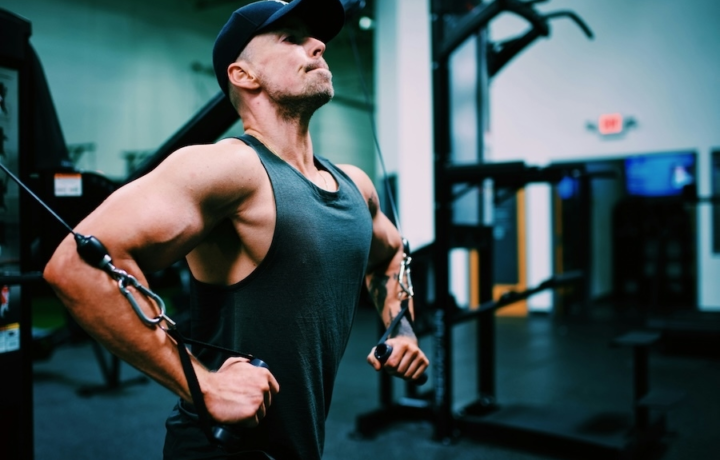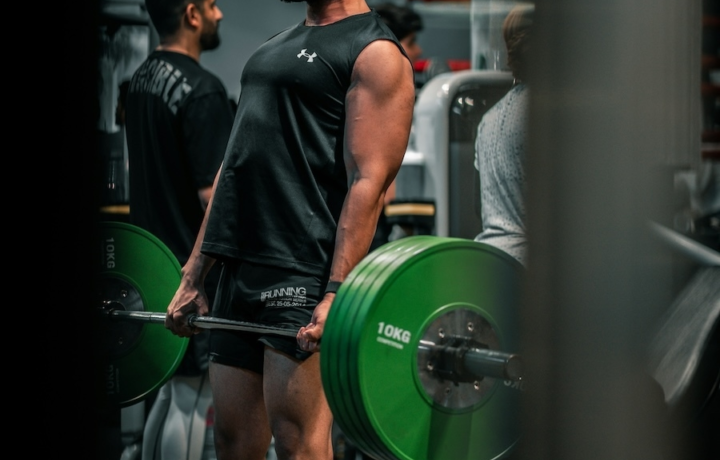build maximum strength and muscle mass
Barbell
Barbell exercises represent the gold standard for strength training and muscle development. This versatile equipment allows you to handle heavier loads than any other training method, making barbells essential for building serious strength, power, and size across all major muscle groups.
Focus on
Pick your muscle groups
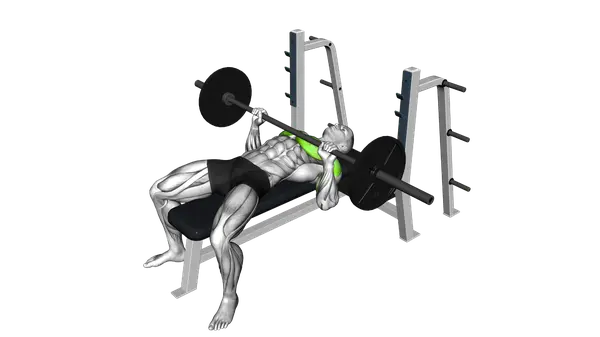
Barbell Bench Press
The barbell bench press stands as a cornerstone in strength training, revered by intermediate lifters across powerlifting and bodybuilding communities alike. This compound movement primarily targets the pectoral muscles while significantly engaging the triceps and anterior deltoids, making it an efficient chest developer with impressive strength-building benefits. What makes the bench press particularly valuable is its remarkable ability to overload the upper body pushing muscles with substantial weight, creating the mechanical tension necessary for muscle growth and strength development. For intermediate lifters, this exercise serves as both a reliable strength benchmark and a versatile tool for building a more impressive upper body. The beauty of the bench press lies in its adaptability within various training protocols. Powerlifters typically employ heavier loads with lower repetitions to maximize strength gains, while bodybuilders might incorporate moderate weights with higher volume to stimulate hypertrophy. This versatility allows intermediate athletes to adjust the exercise based on their specific goals without needing to change the movement pattern itself. Beyond the visible physical benefits, the bench press delivers substantial neuromuscular adaptations. The coordination required between the chest, shoulders, and triceps enhances overall pressing strength that transfers to numerous daily activities and other gym movements. Additionally, the stability demands placed on the core and shoulder girdle contribute to improved upper body control and function. For those seeking strength development, few exercises can match the barbell bench press in terms of progressive overload potential. The movement allows for precise weight increments that make tracking progress straightforward and rewarding. This measurability provides intermediate lifters with clear feedback on their development journey, creating both motivation and direction in their training programs. While certainly not the only chest exercise worth performing, the barbell bench press remains an efficient, effective, and evidence-based selection for intermediate lifters looking to develop both strength and muscle mass in their upper body pushing muscles.
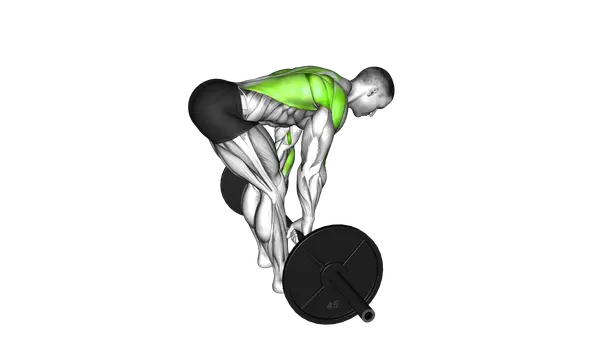
Barbell Bent Over Row
The barbell bent over row stands as one of the most effective compound movements for developing a strong, well-defined back. This classic exercise primarily targets the latissimus dorsi and trapezius muscles while engaging numerous secondary muscle groups throughout the posterior chain. For intermediate lifters, this movement offers an ideal balance of challenge and accessibility, allowing for significant strength and muscle development. When performed correctly, the barbell bent over row creates tremendous activation across the entire back complex. The latissimus dorsi (lats) bear the brunt of the workload, contributing to that coveted V-taper physique. Meanwhile, the trapezius muscles—particularly the middle and lower portions—undergo substantial stimulation, helping to create thickness and definition across the upper back. Additional engagement occurs in the rhomboids, rear deltoids, and even the biceps as assisting muscles. In bodybuilding circles, the bent over row is revered for its hypertrophy-inducing potential. The exercise allows for controlled time under tension and significant loading, creating the mechanical stress necessary for muscle growth. Many successful bodybuilders credit this movement as instrumental in developing the three-dimensional back thickness that stands out on stage. Powerlifters value the bent over row for its tremendous carryover to competition lifts. The strength developed through consistent rowing directly translates to improved deadlift performance by reinforcing proper back positioning under load. Additionally, the enhanced upper back stability contributes to a more solid platform during heavy bench pressing. Few exercises match the barbell bent over row's ability to build functional pulling strength. The movement pattern closely mimics many real-world lifting scenarios, making it exceptionally practical. Progressive overload with this exercise builds not just aesthetic muscle but also genuine strength that transfers to athletic performance. The stabilization demands also strengthen the lower back and core, creating a more injury-resistant physique capable of greater performance across all lifting endeavors.
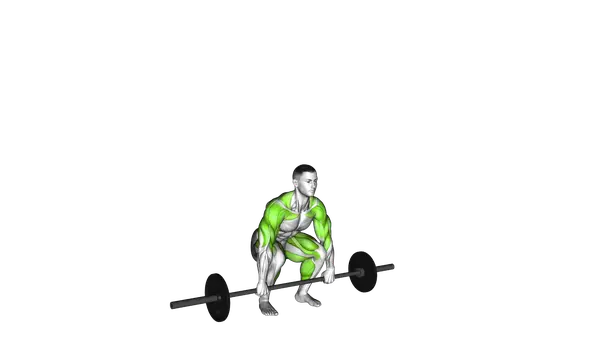
Barbell Clean And Jerk
The Barbell Clean and Jerk stands as one of the most technically challenging and physically demanding lifts in strength sports, requiring an extraordinary blend of power, coordination, and athletic ability. This Olympic weightlifting staple is classified as an advanced compound movement that simultaneously engages multiple major muscle groups, with primary emphasis on the quadriceps, glutes, trapezius muscles, and front deltoids during its execution. As the only lift in weightlifting that moves the barbell from floor to overhead, the Clean and Jerk has rightfully earned its reputation as the ultimate test of total-body strength and power. The explosive nature of this lift triggers an impressive hormonal response, stimulating growth across the entire body while developing functional strength that transfers to athletic performance. Many elite athletes across various sports incorporate this movement into their training regimens to enhance power output and athletic capability. While most commonly associated with Olympic weightlifting competitions, the Clean and Jerk has found its way into CrossFit programming as a cornerstone movement, features prominently in many powerlifting-adjacent training protocols, and serves bodybuilders as an effective compound exercise for developing thick traps and powerful legs. The versatility of this lift makes it valuable across multiple fitness disciplines, though it's particularly prized for its strength-building properties. Research indicates that mastering the Clean and Jerk can significantly improve rate of force development, a critical factor in athletic performance that measures how quickly an athlete can generate maximum force. The neural adaptations from regularly performing this complex movement pattern also enhance intermuscular coordination and proprioception, contributing to better body awareness and movement efficiency in other athletic endeavors. For those willing to invest the time to master its technique, the Barbell Clean and Jerk delivers exceptional returns in terms of strength development, power output, and athletic capability, making it one of the most respected and rewarding lifts in the strength training world.
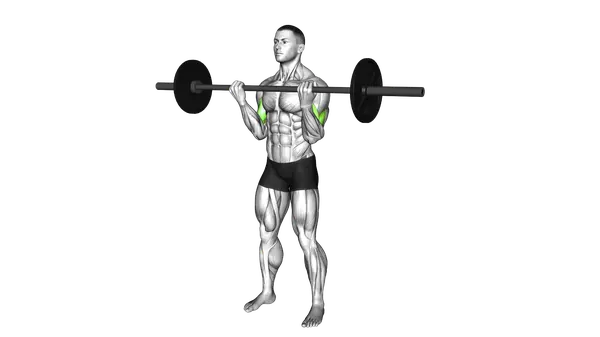
Barbell Curl
The barbell curl stands as a foundational exercise in the world of bodybuilding and strength training, beloved by beginners and seasoned lifters alike for its effectiveness in developing impressive biceps and forearm strength. This classic movement has remained a staple in fitness routines for decades, with good reason - few exercises isolate and target the biceps brachii with such precision and efficiency. For newcomers to resistance training, the barbell curl offers an accessible entry point into the world of free weight exercises. Its straightforward nature makes it ideal for beginners to learn proper form while still providing enough resistance to stimulate muscle growth. The beauty of this movement lies in its simplicity, yet behind this simplicity lies tremendous potential for biceps and forearm development. In bodybuilding circles, the barbell curl has attained almost legendary status. It's not merely an exercise but a benchmark - a movement that has helped sculpt the arms of countless champions throughout the decades. The steady tension throughout the range of motion creates the perfect environment for muscle hypertrophy, allowing bodybuilders to achieve that coveted bicep peak and overall arm development that's immediately noticeable. Beyond aesthetic benefits, the barbell curl significantly contributes to functional strength. Strong biceps assist in countless daily activities that involve pulling or lifting, making this exercise valuable beyond just its physique-enhancing properties. The forearm activation during barbell curls also improves grip strength, a frequently overlooked component of overall strength that carries over to nearly every other lifting movement. While seemingly straightforward, the barbell curl offers considerable versatility through grip width variations, tempo adjustments, and resistance progression. This adaptability makes it suitable for various training phases, from building a foundation of strength to refining muscle definition. Whether your goal is to develop impressive arms or enhance your functional pulling strength, the barbell curl deserves its prominent place in any well-designed training program.
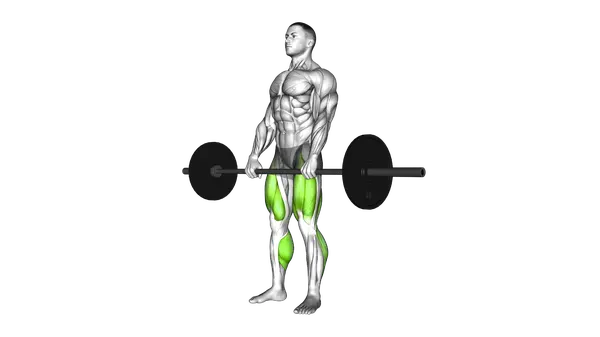
Barbell Deadlift
The Barbell Deadlift stands as a cornerstone in strength training, revered across both powerlifting and bodybuilding communities for its unparalleled ability to develop total-body power. This compound movement primarily targets the posterior chain, with significant engagement of the glutes, hamstrings, and erector spinae muscles, though it effectively works nearly every major muscle group in some capacity. What makes the deadlift particularly valuable is its carryover to real-world strength. The fundamental hip-hinge pattern mimics movements we perform daily, from picking up groceries to moving furniture, but allows for progressive loading that can transform your physique and functional capacity. For intermediate lifters, the deadlift offers a perfect balance of challenge and reward, serving as a reliable marker of overall strength development. The beauty of the deadlift lies in its simplicity and efficiency. Few exercises deliver comparable hormonal responses, with research showing significant increases in growth hormone and testosterone following heavy deadlift sessions. This hormonal cascade creates an optimal environment for muscle growth throughout the entire body, not just in the directly targeted muscles. Competitive powerlifters value the deadlift as one of the "big three" lifts in competition, often training variations to overcome sticking points. Meanwhile, bodybuilders appreciate how the movement develops thickness in the back, density in the hamstrings, and roundness in the glutes – all crucial elements for a balanced physique. While classified as an intermediate movement, the deadlift rewards lifelong practice. As strength increases, many find their technique continually evolving, with subtle refinements leading to significant performance breakthroughs. The deadlift also serves as an excellent assessment tool, revealing weaknesses in the posterior chain that might otherwise go unaddressed in typical training programs. For those seeking genuine strength development rather than just the appearance of strength, regular deadlifting provides indisputable results. It remains one of the most honest indicators of true functional power and a cornerstone of any serious strength training regimen.
Built for Progress
Take the Guesswork
Out of Training
Create personalized AI-powered workout plans that evolve with you. Train smarter, track every rep and keep moving forward.
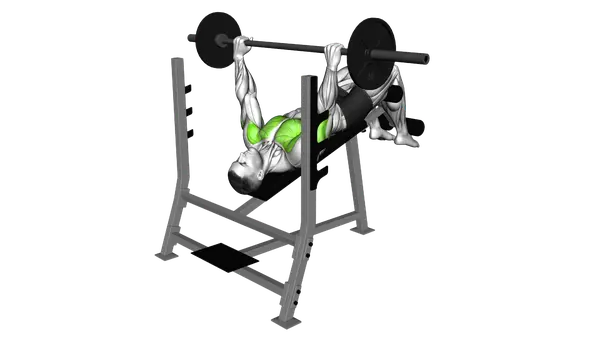
Barbell Decline Bench Press
The Barbell Decline Bench Press stands as a powerful compound movement that has earned its place in both bodybuilding and powerlifting circles. This intermediate-level exercise predominantly targets the lower portion of the pectoral muscles while engaging the triceps and front deltoids as crucial secondary movers. The unique angle of the decline bench shifts emphasis to the lower chest fibers, creating a more comprehensive pec development when programmed alongside flat and incline variations. Unlike its flat bench counterpart, the decline position reduces shoulder strain for many lifters while allowing for potentially heavier loads due to the shortened range of motion and advantageous leverage. This makes it particularly valuable for strength enthusiasts looking to overload the pressing muscles with substantial weight. The mechanical efficiency of this movement often enables lifters to handle 5-10% more weight than they might on a traditional flat bench. For bodybuilders, the decline bench press delivers that coveted lower pectoral development and contributes significantly to creating a full, balanced chest appearance. The exercise promotes hypertrophy through substantial time under tension and the ability to handle challenging loads. Meanwhile, powerlifters appreciate the carryover strength benefits to competition bench pressing, as the decline variation can help overcome sticking points and build pressing power. Research suggests that EMG activity in the lower pectoral region is notably higher during decline pressing compared to flat or incline variations, confirming its effectiveness for targeting this specific area. This makes it an excellent option for those looking to bring up lagging lower chest development or simply add variety to their pressing movements. While sometimes overlooked in favor of its flat and incline siblings, the decline bench press delivers remarkable strength and muscle-building benefits when properly programmed. Whether incorporated as a primary movement or as an accessory exercise, it offers unique advantages that can help intermediate lifters continue progressing toward their physique and performance goals.
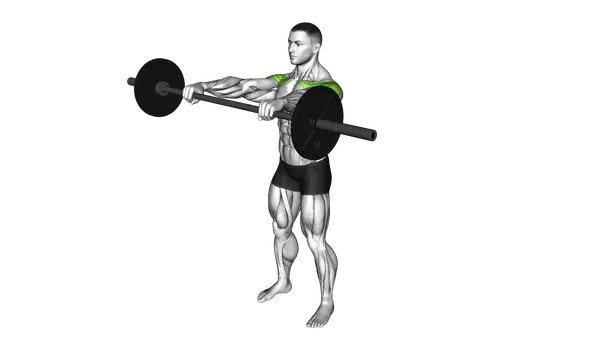
Barbell Front Raise
The Barbell Front Raise stands as a potent shoulder-building movement that specifically targets your front deltoids, making it an excellent addition to any comprehensive upper body routine. This intermediate-level exercise has earned its place in both bodybuilding and strength training regimens for its ability to isolate and develop the anterior deltoid muscles with remarkable precision. When properly integrated into your training program, the Barbell Front Raise helps create that sought-after shoulder cap development that many physique athletes pursue. The exercise utilizes a straight barbell to provide balanced resistance across both shoulders simultaneously, ensuring symmetrical development while allowing you to move significant weight as your strength progresses. For bodybuilders, this translates to enhanced shoulder definition and that coveted 3D look when on stage or in photos. Beyond aesthetic benefits, strengthening your front delts through this movement carries significant functional advantages. Strong anterior deltoids contribute to improved pressing power, better posture, and greater stability in numerous everyday activities and athletic movements. For strength athletes, well-developed front delts can translate to improvements in pressing exercises like the bench press and overhead press. What sets the Barbell Front Raise apart from dumbbell variations is the fixed hand position, which creates a unique stability challenge and can potentially allow for heavier loading patterns over time. The exercise can be programmed effectively as either a primary shoulder movement on deltoid-focused days or as a finishing movement after compound presses to ensure complete front deltoid stimulation. As with any shoulder exercise, respecting proper loading parameters is crucial for joint health and sustainable progress. The Barbell Front Raise rewards patience and proper form over excessive weight, making it an exercise where the mind-muscle connection truly matters. For best results, incorporate this movement into your routine 1-2 times weekly, allowing for adequate recovery between sessions to maximize growth and strength development.
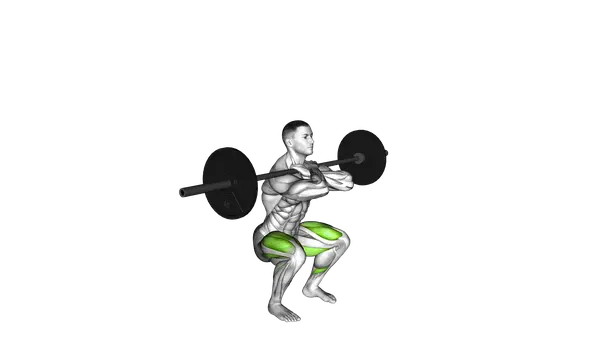
Barbell Front Squat
The barbell front squat stands as a cornerstone compound movement in strength training that delivers exceptional results for intermediate lifters seeking to develop their lower body and core strength. Unlike its more common counterpart, the back squat, the front squat positions the barbell across the front of the shoulders, creating a more upright torso position that dramatically increases the activation of the quadriceps while still engaging the glutes significantly. This exercise has earned its respected place in both powerlifting and bodybuilding circles for good reason. Powerlifters appreciate the front squat's ability to strengthen the quad dominance needed for competition squats and its carryover to improved positioning in deadlifts. Bodybuilders value its targeted quad development and the aesthetic benefits it brings to the anterior chain. The front rack position engages the core musculature more intensely than many other squat variations, as your abdominals must work overtime to maintain an upright torso position throughout the movement. This core stabilization aspect makes the front squat particularly valuable for athletes looking to develop functional strength that transfers to sport-specific movements. What sets the front squat apart is its joint-friendly nature compared to other squat variations. The more vertical torso position reduces shear forces on the lumbar spine, making it an excellent option for those with back concerns who still want to train heavy. The movement also demands and builds impressive mobility in the wrists, elbows, shoulders, and ankles – creating better overall movement patterns. For intermediate lifters looking to break through plateaus, the front squat serves as both a humbling reality check and an effective strength builder. The exercise forces proper form – you simply cannot cheat a front squat without dropping the bar. This built-in feedback mechanism makes it an honest assessment of your true strength capabilities while simultaneously building the foundation for even greater gains in your overall training program.
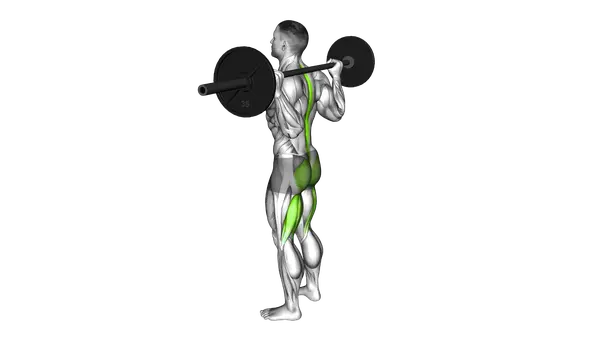
Barbell Good Morning
The Barbell Good Morning stands as a powerful posterior chain developer that's often underutilized in many training programs. This intermediate movement primarily targets the hamstrings, erector spinae, and glutes, making it invaluable for both powerlifting and bodybuilding pursuits. As a strength-focused exercise, it develops the hip hinge pattern critical for deadlifts and squats while building impressive back-side musculature. What sets the Good Morning apart is its unique leveraged position, creating significant tension through the entire posterior chain with relatively modest loads. The exercise earned its quirky name from its resemblance to the bowing greeting common in certain cultures. Despite its somewhat unusual appearance, serious strength athletes have long recognized its value for developing hip extension strength and enhancing overall power production. For powerlifters, the Good Morning serves as an excellent accessory movement that directly carries over to squat and deadlift performance by strengthening the exact muscles needed to maintain proper positioning under heavy loads. Bodybuilders appreciate it for developing the dense, striated hamstring and glute development that's difficult to achieve through isolation movements alone. The beauty of the Good Morning lies in its versatility: it can be programmed as a main strength movement using moderate weights for sets of 5-8 reps, or as an accessory exercise with lighter weights for higher repetitions to build muscular endurance and hypertrophy. The exercise particularly shines for athletes who struggle with maintaining a neutral spine during heavy pulling movements or who need to develop stronger posterior chains to balance quad-dominant training. While not as glamorous as bench presses or as immediately satisfying as bicep curls, the Barbell Good Morning rewards dedicated practitioners with injury resilience, improved posture, and the kind of functional strength that translates to real-world activities and serious athletic performance. Its time-tested effectiveness makes it a worthy addition to any comprehensive strength training program.
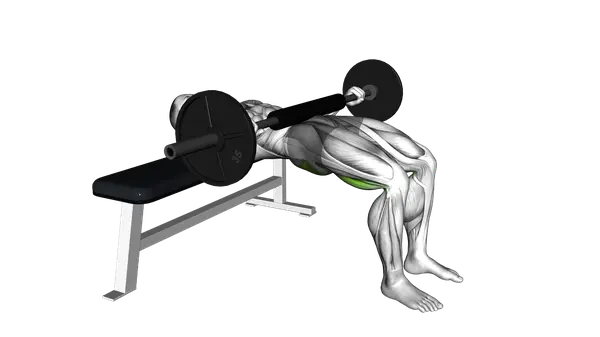
Barbell Hip Thrust
The Barbell Hip Thrust stands as a cornerstone movement for anyone serious about developing posterior chain strength, particularly targeting the glutes and hamstrings with remarkable efficiency. This intermediate-level exercise has gained tremendous popularity in both bodybuilding and powerlifting circles for its ability to isolate and overload the hip extensors in a biomechanically advantageous position. Unlike many traditional lower body exercises, the hip thrust places the hip joint through its complete range of motion against resistance while minimizing stress on the lower back. This makes it especially valuable for athletes looking to improve strength and power output in activities requiring explosive hip extension - from sprinting and jumping to heavy lifting movements. What sets the barbell hip thrust apart is its superior activation of the gluteus maximus compared to squats and deadlifts, as confirmed by electromyography (EMG) studies. The horizontal force vector created during the exercise places constant tension on the glutes throughout the movement, making it an unparalleled glute-builder. For powerlifters, this translates to improved lockout strength in deadlifts and enhanced stability in squats. The beauty of the hip thrust lies in its scalability - beginners can start with bodyweight variations before progressing to loaded versions, while advanced lifters can load the barbell with impressive weights as their strength develops. Many experienced lifters find they can hip thrust significantly more weight than they can squat, creating a powerful stimulus for muscle growth. For those focused on aesthetics, few exercises can match the hip thrust's ability to develop the rounded, muscular glute appearance prized in bodybuilding. Simultaneously, strength athletes value the exercise for its carryover to athletic performance and compound lift improvements. Whether your goal is a stronger posterior chain, enhanced athletic performance, or aesthetic development, the barbell hip thrust deserves a prominent place in your training regimen.
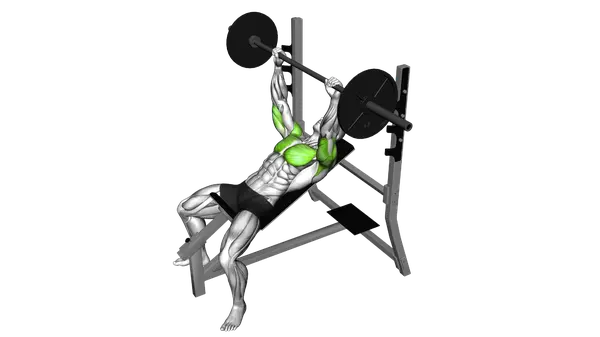
Barbell Incline Bench Press
The Barbell Incline Bench Press stands as a cornerstone compound movement for developing impressive upper body strength and musculature. This intermediate-level exercise primarily targets the upper pectorals while significantly engaging the anterior deltoids (front shoulders) and triceps as supporting muscle groups. The angled position—typically set between 30 to 45 degrees—shifts emphasis to the upper chest region, creating a balanced development that flat bench pressing alone cannot achieve. Athletes across bodybuilding and powerlifting disciplines incorporate this movement for distinct but complementary purposes. Bodybuilders value the incline press for its ability to sculpt a well-defined chest with full upper pectoral development, preventing the drooping appearance that can result from overdeveloping the lower chest. Powerlifters, while focusing more on flat bench for competition, utilize the incline variation to strengthen supporting muscles that contribute to their overall pressing power and performance. The beauty of the incline barbell press lies in its versatility for strength development. Progressive overload is particularly effective with this movement, allowing lifters to continuously challenge their upper body by incrementally increasing resistance. This steady progression stimulates not just muscle growth but also reinforces the neural pathways responsible for strength expression. Many strength enthusiasts find that improvements in incline press performance correlate with enhanced overall pressing capability. From a physiological perspective, the exercise creates optimal tension through the clavicular fibers of the pectoral muscles while maintaining substantial recruitment of the sternal fibers. This comprehensive activation pattern, combined with significant triceps engagement, makes it an efficient use of training time for those seeking both aesthetic and functional improvements to their upper body. When programmed correctly—typically for 3-4 sets of 6-12 repetitions depending on specific goals—the incline barbell bench press delivers substantial returns on investment, making it a worthy addition to any serious strength or physique-focused regimen.
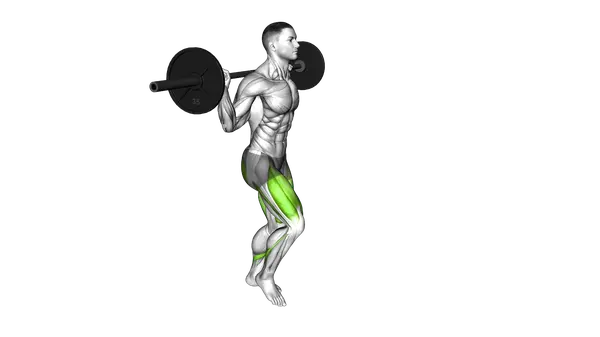
Barbell Lunge
The barbell lunge stands as a cornerstone exercise in strength training arsenals, delivering impressive results for those ready to advance beyond beginner movements. This compound exercise simultaneously targets multiple lower body muscle groups, with primary emphasis on the glutes, quads, and hamstrings. What makes the barbell lunge particularly effective is its ability to challenge each leg independently while maintaining the stability demands of supporting a loaded barbell. For bodybuilding enthusiasts, the barbell lunge offers exceptional muscle development potential through controlled execution and progressive overload. The exercise creates significant mechanical tension in the target muscles, stimulating hypertrophy when performed with appropriate resistance. Meanwhile, HIIT practitioners appreciate how barbell lunges can elevate heart rate quickly when incorporated into high-intensity circuits, making them versatile for both strength and conditioning goals. The beauty of the barbell lunge lies in its functional carryover to everyday movements and athletic performance. The unilateral nature of lunges addresses muscle imbalances between legs while enhancing core stability and proprioception. Many athletes report improved performance in sports requiring explosive lower body power after incorporating weighted lunges into their training regimens. From a strength development perspective, barbell lunges create a powerful stimulus for adaptation. The exercise activates a substantial amount of muscle tissue, triggering hormonal responses favorable for overall strength gains. As an intermediate-level movement, it bridges the gap between basic bodyweight exercises and more advanced lifting techniques, allowing for continued progression without plateauing. While not as commonly tracked as squats or deadlifts, many serious lifters find that improving their lunge numbers correlates with enhanced performance across other compound lifts. The exercise demands not just raw strength but also coordination, balance, and mental focus—qualities that define the intermediate lifter. When programmed appropriately with progressive overload principles, barbell lunges become an invaluable tool for developing lower body power, functional mobility, and aesthetic development.
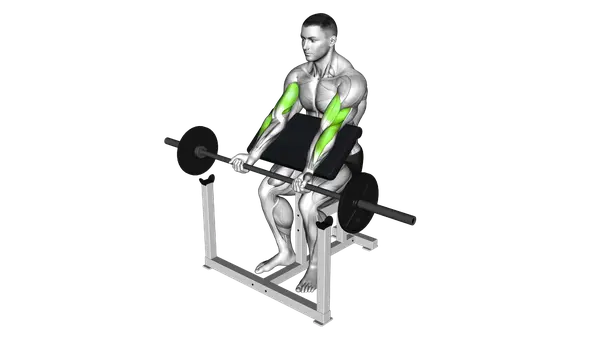
Barbell Preacher Curl
The Barbell Preacher Curl stands as a cornerstone bicep isolation exercise in the bodybuilding world, beloved for its ability to target the biceps brachii with remarkable precision. This intermediate-level movement has earned its reputation as a go-to exercise for those serious about sculpting defined arms and building noticeable strength in the anterior upper arm. What sets the Preacher Curl apart from standard curling variations is the stability offered by the angled pad, which effectively removes the body's natural tendency to cheat the movement. By forcing your upper arms into a fixed position, the exercise eliminates momentum and places continuous tension directly on the biceps throughout the entire range of motion. This fixed position particularly emphasizes the lower portion of the biceps, an area many lifters find challenging to develop fully. For bodybuilders, the Barbell Preacher Curl represents more than just an accessory movement—it's a fundamental tool for creating the peaked bicep appearance coveted on competitive stages. The exercise allows for substantial loading while maintaining strict form, making it ideal for progressive overload training principles that drive muscle hypertrophy. Many champion bodybuilders credit this exercise with helping develop the separation and definition that judges look for in physique competitions. From a strength perspective, the Preacher Curl builds functional bicep power that translates to improved performance in compound pulling movements. By strengthening the elbow flexors in a controlled environment, lifters often notice enhanced capacity in exercises like rows and pull-ups. The stability requirements also engage the forearm muscles, contributing to improved grip strength over time. For those focused on aesthetics and function alike, incorporating Barbell Preacher Curls into your training regimen twice weekly can yield impressive results. As your biceps develop through consistent practice with this movement, you'll notice not only visual improvements but also greater strength in everyday activities requiring elbow flexion.
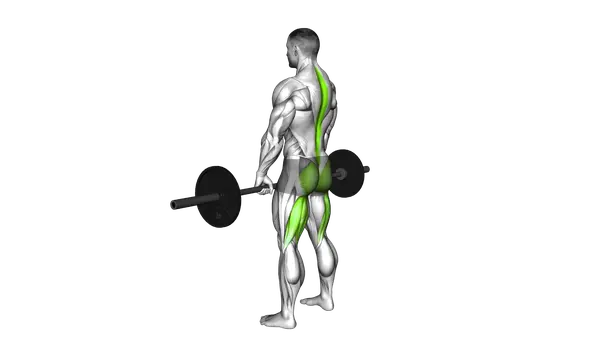
Barbell Romanian Deadlift
The Barbell Romanian Deadlift, often abbreviated as RDL, stands as a cornerstone movement in strength training circles, particularly revered among intermediate lifters seeking to develop their posterior chain. This compound exercise primarily targets the hamstrings, glutes, and erector spinae, creating a synergistic effect that few other movements can replicate with such efficiency. Popularized in both powerlifting and bodybuilding communities, the RDL serves different yet complementary purposes across these disciplines. Powerlifters utilize this movement to strengthen the muscles critical for conventional deadlifts and squats, enhancing their competition lifts. Bodybuilders, meanwhile, appreciate the RDL for its ability to sculpt and define the hamstrings and glutes with remarkable precision, creating that coveted lower body aesthetic. What distinguishes the Romanian Deadlift from its conventional counterpart is the emphasis on hip hinging rather than knee flexion. This subtle yet significant difference shifts the workload predominantly to the posterior chain, creating intense tension through the hamstrings at the bottom position of the movement. The constant tension maintained throughout the exercise makes it particularly effective for hypertrophy, while the controlled eccentric phase challenges even the strongest athletes. The beauty of the RDL lies in its versatility as both a strength and muscle-building tool. Progressive overload with this movement leads to substantial strength gains that transfer to athletic performance, from sprinting speed to jumping power. The exercise demands and develops impressive core stability, as the spine must remain neutral under load throughout the movement pattern. For those pursuing serious strength goals, the Romanian Deadlift deserves a permanent place in your training regimen. While technically less complex than some compound movements, mastering the hip hinge pattern required for the RDL pays dividends across numerous aspects of physical performance. The exercise's remarkable efficiency in stimulating multiple major muscle groups simultaneously makes it an invaluable addition to any well-designed strength program.
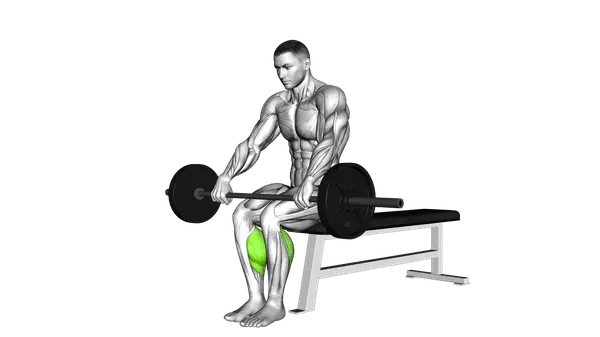
Barbell Seated Calf Raise
The barbell seated calf raise stands as a cornerstone exercise for anyone serious about developing impressive lower leg definition and functional strength. This intermediate-level movement specifically targets the gastrocnemius and soleus muscles that comprise your calves, making it invaluable for both bodybuilding aesthetics and practical strength gains. What sets the seated variation apart from standing calf exercises is its ability to isolate the soleus muscle more effectively. By placing your body in a seated position with knees bent at 90 degrees, the gastrocnemius (which crosses both knee and ankle joints) is somewhat deactivated, forcing the soleus to handle the majority of the workload. This targeted approach proves particularly beneficial for bodybuilders seeking balanced, proportional development in the lower leg region. For strength athletes, well-developed calves translate to improved performance across various athletic endeavors. The barbell seated calf raise helps build resilient ankle joints and lower leg strength that carries over to jumping, running, and overall lower body power. The progressive overload potential with the barbell makes it superior to machine alternatives for those looking to continually challenge their calf development. Many lifters neglect direct calf training, creating a visual disconnect between impressively built quads and hamstrings and underdeveloped calves. Incorporating this exercise into your routine 2-3 times weekly with varying rep ranges (8-12 for hypertrophy, 15-20 for endurance) can address this common weak point. The seated variation also tends to be gentler on the spine compared to standing loaded calf work, making it accessible for those with certain back concerns. Remember that calves typically respond best to a combination of higher volume, varied rep tempos, and full ranges of motion. The barbell seated calf raise delivers on all fronts, providing the necessary stimulus for growth while allowing precise load management for consistent progression in both size and strength.
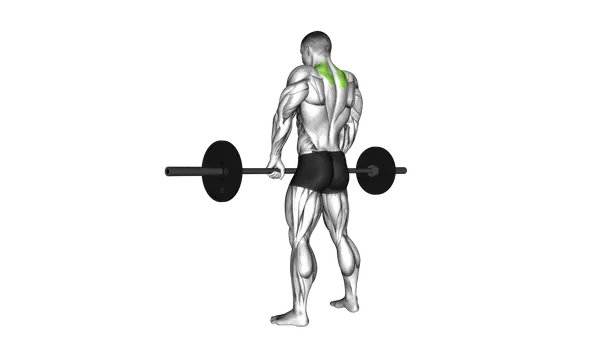
Barbell Shrug
The barbell shrug stands as a cornerstone exercise for anyone serious about developing impressive upper body aesthetics and functional strength. This intermediate-level movement primarily targets the trapezius muscles—those diamond-shaped muscles extending from your neck to your shoulders—while also engaging the surrounding neck musculature. For bodybuilders seeking that coveted yoke-like appearance across the upper back, barbell shrugs deserve a permanent spot in your training regimen. When properly executed, barbell shrugs create that eye-catching shelf of muscle that frames your physique and adds an unmistakable look of power. The beauty of this exercise lies in its simplicity combined with its remarkable effectiveness. Unlike complex compound movements, shrugs allow you to handle substantial weight while maintaining a focused contraction on the target muscles, making them particularly valuable for strength athletes looking to enhance their pulling power. The trapezius muscles play a crucial role in shoulder stability and posture, meaning barbell shrugs offer benefits extending well beyond aesthetic improvements. Strong traps contribute to better performance in other lifts like deadlifts, rows, and overhead presses by providing a solid foundation for shoulder mechanics. For bodybuilders, well-developed traps create that coveted 3D look, enhancing the visual transition from shoulders to neck. What makes barbell shrugs particularly effective is the direct mechanical tension they place on the traps, triggering hypertrophy through progressive overload. Many strength enthusiasts appreciate how shrugs respond remarkably well to heavy loading, allowing for significant muscle stimulation in a relatively short timeframe. This efficiency makes them perfect for including at the end of back workouts or as a standalone movement on shoulder days. Whether your goal is turning heads on stage with massive upper back development or building functional strength that translates to athletic performance, the barbell shrug delivers impressive returns on your training investment. As with any strength exercise, consistency and proper progression are key to maximizing your results.
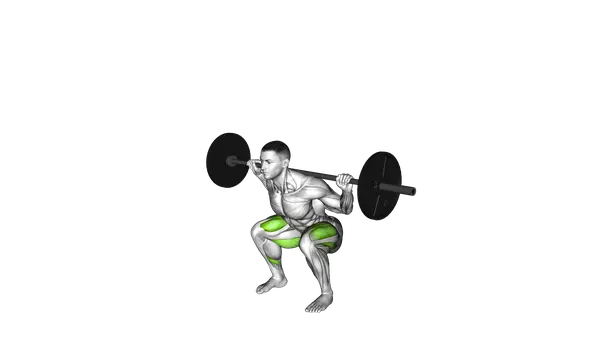
Barbell Squat
The barbell squat stands as perhaps the most revered compound movement in strength training—a true cornerstone exercise that has built champions across generations. This intermediate-level lift primarily engages the quadriceps, glutes, and hamstrings while recruiting numerous stabilizing muscles throughout the entire body. Both powerlifters and bodybuilders embrace the barbell squat, though with slightly different approaches. Powerlifters typically prioritize moving maximum weight with proper technique, often employing a wider stance and focusing on depth requirements for competition. Bodybuilders, meanwhile, might use varied stances, tempos, and rep ranges to stimulate maximum muscle development and symmetry. What makes the barbell squat truly exceptional is its unparalleled ability to build overall strength. Few exercises can match its potential for progressive overload, allowing lifters to continually challenge themselves with heavier weights as they advance. This progressive nature stimulates not only muscle growth but also impressive strength adaptations throughout the entire lower body and core. The beauty of the squat lies in its functional carryover to daily life and athletic performance. The movement pattern closely mimics actions we perform regularly, from sitting to jumping, making it not just a gym exercise but a movement that enhances quality of life. Research consistently demonstrates that squat strength correlates with improved sprinting speed, jumping ability, and overall athletic prowess. Beyond physical benefits, the mental fortitude developed through consistent squatting cannot be overstated. Standing under a challenging load forces lifters to confront their limitations, build confidence, and develop grit that extends far beyond the weight room. This psychological hardiness, combined with the hormonal response triggered by heavy squatting, creates a powerful stimulus for total-body development.
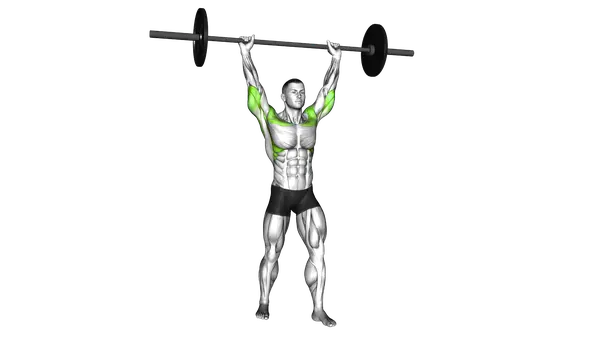
Barbell Standing Military Press
The Barbell Standing Military Press stands as a cornerstone strength movement in both powerlifting and bodybuilding regimens, demanding respect for its ability to build impressive shoulder strength and upper body development. This intermediate compound exercise primarily targets the front deltoids while significantly engaging the triceps as crucial secondary movers, creating that coveted boulder shoulder appearance when performed consistently over time. Unlike many isolation movements, the military press challenges your entire body as a unit, requiring core stability, proper spinal alignment, and full-body tension to execute effectively. The exercise's origins trace back to military physical training programs—hence the name—where soldiers would demonstrate strength by pressing a weighted bar overhead with strict form and discipline. For strength enthusiasts, the standing military press serves as one of the fundamental overhead pressing movements, developing raw power through the shoulders, upper chest, and triceps while simultaneously building stability through the core and lower body. Many powerlifters incorporate this lift as an accessory movement to improve bench press performance, as stronger shoulders often translate to a more powerful bench. Bodybuilders particularly value the military press for its ability to add significant mass to the anterior deltoids, creating that shelf-like appearance at the front of the shoulders that contributes to an impressive V-taper physique. The triceps engagement also promotes arm thickness, enhancing overall upper body proportions. What makes the barbell standing variation particularly challenging is the strict requirement for core stability and balance throughout the movement. Unlike seated variations, the standing position demands full-body coordination and prevents any cheating through back arch or momentum, making each rep a true test of shoulder strength and overall stability. For optimal progress, most strength coaches recommend incorporating this movement early in your shoulder training session when energy levels are highest, allowing for maximal loading and proper technique to fully capitalize on this powerful upper body developer.
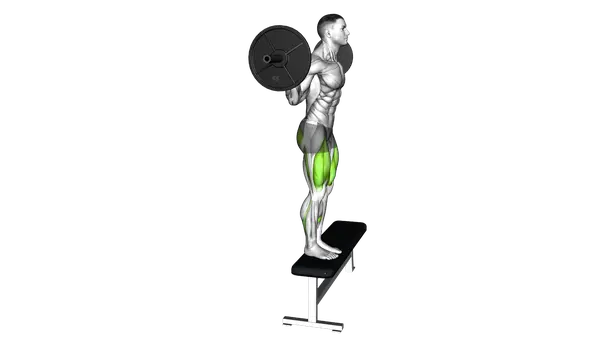
Barbell Step Up
The Barbell Step Up stands as a versatile compound movement that delivers exceptional lower body development while challenging your balance and coordination. This intermediate-level exercise primarily targets the glutes, quads, and hamstrings, creating a comprehensive stimulus for lower body growth and functional strength. When incorporated into bodybuilding routines, the Barbell Step Up excels at sculpting defined quadriceps, building rounder glutes, and developing hamstring definition with remarkable efficiency. The unilateral nature of this movement addresses muscular imbalances between your left and right sides, ensuring symmetrical development that both looks impressive and contributes to injury prevention. For HIIT enthusiasts, this exercise serves as a powerful metabolic driver. The combination of weight-bearing resistance and the elevation change creates significant oxygen demand, elevating your heart rate and caloric expenditure. Many athletes report continued elevated metabolism for hours following Barbell Step Up sessions, making it valuable for body composition improvements. From a strength perspective, the Barbell Step Up develops real-world power that translates directly to athletic performance. By training each leg independently while supporting additional load, you develop the kind of functional strength needed for jumping, climbing, and explosive sports movements. The stability requirements also engage your core and smaller stabilizing muscles that often get neglected in bilateral exercises. What makes the Barbell Step Up particularly valuable is its scalability across fitness levels. While categorized as intermediate, the exercise can be adjusted through step height, barbell weight, and tempo to accommodate progression. Many strength coaches praise this movement for its joint-friendly nature compared to other loaded leg exercises, making it sustainable for long-term training programs. For those seeking both aesthetic improvements and performance enhancements, few exercises deliver the comprehensive benefits of the properly executed Barbell Step Up in such an efficient package.
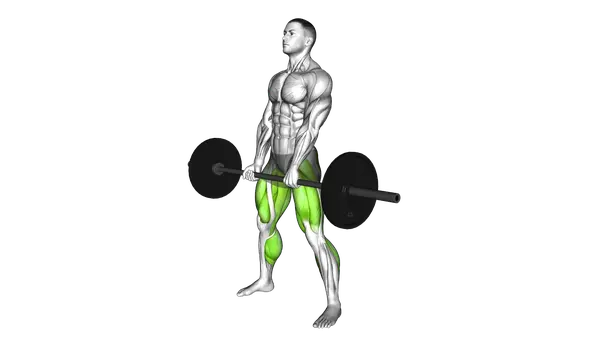
Barbell Sumo Deadlift
The Barbell Sumo Deadlift stands as one of the most effective compound movements for developing lower body strength and power. This intermediate-level exercise primarily targets the glutes, hamstrings, and quadriceps while also engaging the entire posterior chain. Unlike the conventional deadlift, the sumo variation utilizes a wider stance with toes pointed outward, which shortens the range of motion and places greater emphasis on the inner thighs and glutes. Popular in both powerlifting and bodybuilding circles, the sumo deadlift offers versatility for various training goals. Powerlifters often embrace this technique for its mechanical advantage, allowing many lifters to move heavier loads than with conventional stance. Meanwhile, bodybuilders appreciate the sumo deadlift's ability to develop thick, powerful legs and a well-rounded physique with special emphasis on the outer sweep of the quadriceps and the glute-hamstring tie-in. What makes the sumo deadlift particularly valuable is its transferable strength benefits. The movement pattern reinforces proper hip hinging, which carries over to numerous athletic movements and daily activities. Research has shown that regular deadlifting can significantly improve bone density, making it an excellent exercise for long-term skeletal health and injury prevention. From a physiological perspective, the sumo deadlift triggers a substantial hormonal response, elevating testosterone and growth hormone levels when performed with challenging weights. This makes it an excellent choice for those looking to maximize their body's natural anabolic environment. The exercise also delivers impressive caloric expenditure due to the large muscle groups involved, making it valuable for both muscle-building and fat loss phases. While the sumo stance might feel unnatural at first for those accustomed to conventional deadlifting, many lifters with certain anatomical structures—particularly those with longer torsos or limited hip mobility—find the sumo position more comfortable and mechanically advantageous. This accessibility makes it an excellent variation to include in any comprehensive strength training program, regardless of whether your ultimate goal is raw strength development or aesthetic enhancement.
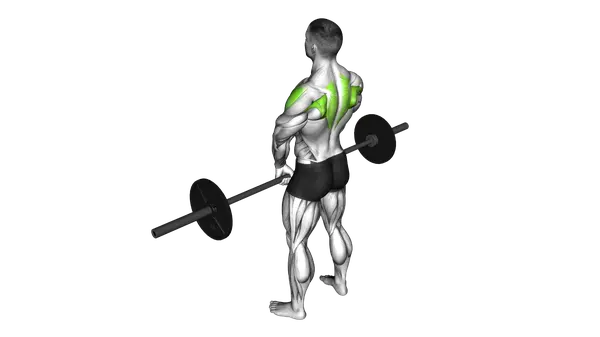
Barbell Upright Row
The Barbell Upright Row stands as a classic compound movement that has maintained its place in strength training and bodybuilding routines for decades. This intermediate-level exercise primarily targets the front and side deltoids while significantly engaging the trapezius muscles, creating that coveted shoulder width and upper back development that many fitness enthusiasts pursue. When incorporated into bodybuilding regimens, the Barbell Upright Row serves as an excellent mass builder for the shoulder complex, helping to create that balanced, capped deltoid appearance. The movement's unique pulling pattern stimulates multiple muscle groups simultaneously, making it an efficient choice for those looking to maximize their training time while still hitting key upper body areas. Many HIIT practitioners have also embraced this exercise as a powerful addition to their high-intensity circuits, using moderate weights to drive up heart rate while building functional shoulder strength. The metabolic demands of the movement, particularly when performed with controlled tempo and appropriate loading, can contribute significantly to caloric expenditure during intense training sessions. From a strength perspective, the Barbell Upright Row develops pulling power through the shoulders and upper back, translating to improved performance in other lifts and daily activities. The exercise builds the type of functional strength that supports everything from overhead pressing movements to carrying heavy objects in real-world scenarios. While effective, this exercise deserves respect and attention to form due to its technical nature. The shoulder joint's complexity means that individual anatomical differences can affect how comfortable and beneficial this movement feels. Many experienced lifters find that moderating weight and focusing on quality contractions yields better results than attempting to move extremely heavy loads, particularly for shoulder development rather than just trap engagement. For those seeking comprehensive shoulder development, the Barbell Upright Row remains a time-tested tool that, when properly programmed within a balanced routine, can contribute significantly to upper body strength, aesthetics, and performance.
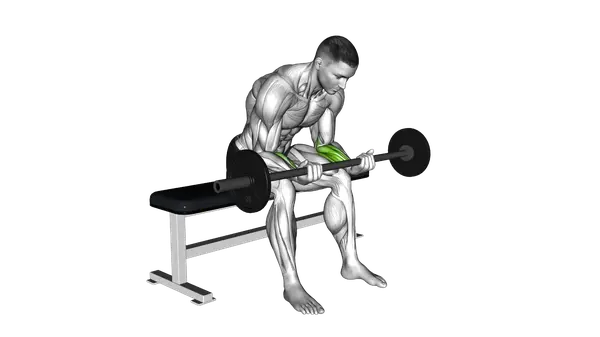
Barbell Wrist Curl
The barbell wrist curl stands as a fundamental forearm exercise in the arsenal of both novice lifters and seasoned bodybuilders alike. This accessible movement specifically targets the flexor muscles of the forearms, making it an excellent choice for beginners looking to develop a stronger grip and more defined lower arms. Despite its simplicity, this exercise delivers impressive results when performed consistently as part of a well-rounded strength training program. For those new to strength training, the barbell wrist curl offers a gentle introduction to forearm development without overwhelming complexity or excessive strain on the joints. The controlled nature of this movement allows beginners to focus on establishing a mind-muscle connection with their forearms—a skill that translates to improved performance in virtually all other lifting exercises that require grip strength. In bodybuilding circles, the barbell wrist curl has maintained its popularity for decades because of its effectiveness in creating that coveted forearm definition. The visibility of well-developed forearms can dramatically enhance overall physique aesthetics, as these muscles are frequently exposed even in everyday clothing. Many competitive bodybuilders incorporate wrist curls into their training regimens to ensure balanced development throughout their entire arm structure. Beyond aesthetic benefits, strengthening the forearms through barbell wrist curls carries significant functional advantages. Enhanced grip strength directly impacts performance in compound movements like deadlifts, rows, and pull-ups. This carryover effect makes forearm training not merely cosmetic but essential for overall strength development. Athletes across various sports—from rock climbing to wrestling—rely on formidable forearm strength for peak performance. Regular inclusion of barbell wrist curls in your routine will gradually build resilience in the tendons and ligaments of the wrists and elbows, potentially reducing injury risk during more demanding exercises. This preventative benefit makes this simple exercise a smart investment for long-term training sustainability, allowing lifters to continue making progress without unnecessary setbacks from preventable injuries.
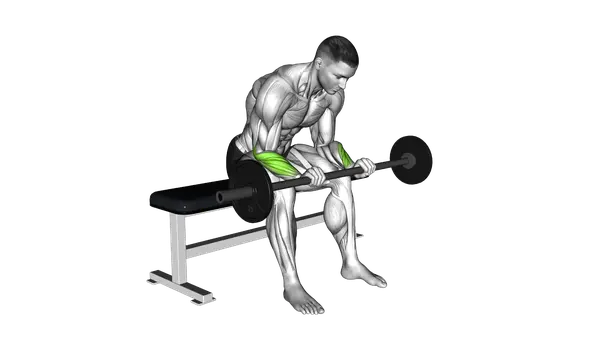
Barbell Wrist Reverse Curl
The Barbell Wrist Reverse Curl stands as one of the most effective isolation exercises for developing impressive forearm strength and definition. This intermediate-level movement specifically targets the extensor muscles on the top of the forearms – an area often neglected in standard training programs but crucial for balanced arm development and overall grip capability. Unlike traditional curls that focus on the flexor muscles, reverse curls shift the emphasis to the extensors, creating that coveted muscular balance that both competitive bodybuilders and strength athletes pursue. The exercise's beauty lies in its simplicity, requiring only a barbell, yet it delivers remarkable results when performed consistently within a well-structured training regimen. For bodybuilders, the reverse curl isn't merely about aesthetics – though it certainly contributes to that coveted vascular, striated forearm appearance. This movement enhances wrist stability and control, translating to improved performance across various pressing and pulling exercises. The increased forearm strength from regular reverse curl training can be the difference between grinding out those final heavy deadlift repetitions or failing to maintain your grip. Strength athletes particularly value this exercise for its carryover to functional power. Strong forearm extensors balance the typically dominant flexors, potentially reducing the risk of imbalance-related injuries while supporting heavier lifts in compound movements. The wrist control developed through reverse curls proves invaluable in sports requiring precise hand positioning or resistance against opposing forces. When integrated into a comprehensive arm routine, the barbell wrist reverse curl serves as the perfect finishing movement, ensuring complete forearm development. While it may not be as glamorous as bicep curls or as impressive as heavy bench presses, this exercise's contribution to upper body strength and aesthetics is undeniable. For those serious about maximizing forearm development and enhancing overall grip strength, the barbell wrist reverse curl deserves a permanent place in your training arsenal.
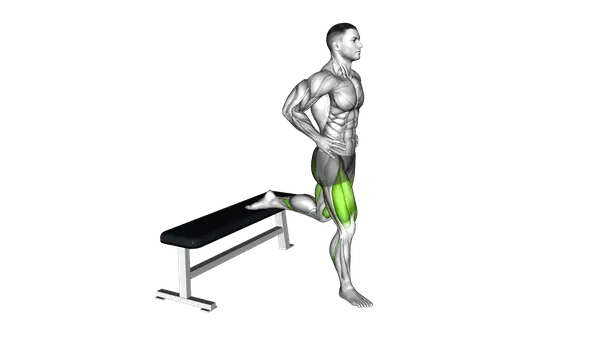
Bulgarian Split Squat
The Bulgarian Split Squat stands as a powerful unilateral leg exercise that has earned its reputation in both strength and physique development circles. This intermediate movement primarily targets the glutes, quads, and hamstrings while engaging numerous stabilizing muscles throughout the lower body and core. Originally popularized by Olympic weightlifters from Bulgaria, this exercise has transcended its origins to become a staple in bodybuilding and HIIT protocols alike. The beauty of the Bulgarian Split Squat lies in its ability to expose and correct muscular imbalances between your dominant and non-dominant legs—something that traditional bilateral exercises often mask. When incorporated into a bodybuilding regimen, this movement excels at creating symmetrical development and detail across the lower body musculature. The isolation of each leg creates tremendous tension through a full range of motion, stimulating muscle growth while improving functional strength. For HIIT enthusiasts, the Bulgarian Split Squat delivers an intense cardiovascular challenge when performed with minimal rest, elevating heart rate and caloric expenditure. From a strength perspective, this exercise offers significant carryover to athletic movements. By training each leg independently, you develop the stabilizing muscles critical for change of direction, acceleration, and power production. The balance component simultaneously enhances proprioception and neuromuscular coordination, which translates to improved performance in compound lifts like squats and deadlifts. What makes the Bulgarian Split Squat particularly valuable is its accessibility—requiring minimal equipment while delivering maximum results. Whether your goal is hypertrophy, conditioning, or functional strength, this exercise delivers remarkable benefits with proper implementation. As you progress, you'll find this movement not only reshapes your lower body aesthetics but also contributes to improved movement patterns and athletic capacity in daily life and sports performance.
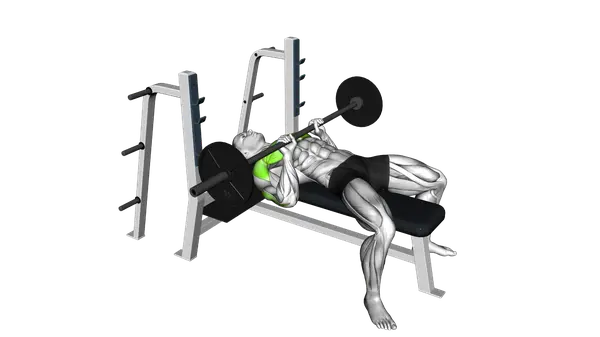
Close-Grip Barbell Bench Press
The Close-Grip Barbell Bench Press stands as a powerful compound movement that targets your triceps as the primary muscle group while also engaging your chest. This intermediate-level exercise has earned its place in both powerlifting and bodybuilding regimens for its remarkable strength-building properties. Unlike the standard bench press where your hands are positioned wider, the close-grip variation places your hands roughly shoulder-width apart or slightly closer, shifting substantial tension to the triceps while still recruiting the pectorals. What makes this exercise particularly valuable is its carryover to other pressing movements. As you develop stronger triceps through consistent close-grip work, you'll likely notice improvements in your traditional bench press, overhead press, and even pushing movements in everyday life. The exercise creates significant tension through the triceps' entire range of motion, particularly at the lockout phase where these muscles are most responsible for extending the elbow joint. For powerlifters, the close-grip bench press serves as an excellent accessory movement to build pressing strength through a slightly different mechanical pattern than the competition bench press. Bodybuilders value this exercise for its ability to add thickness and definition to the triceps, particularly the lateral and medial heads, while still providing quality stimulus to the lower chest fibers. The beauty of the close-grip bench press lies in its simplicity and effectiveness. Using a barbell allows for consistent progressive overload—the fundamental principle behind strength development. As an intermediate lifter, you'll appreciate how this movement can help break through plateaus in your training by targeting potential weak points in your pressing chain. The exercise delivers significant training economy: maximum results from minimal equipment, making it a staple in strength programs across various training philosophies. Remember that while this exercise is tremendously effective, proper execution with appropriate weight is essential to maximize benefits while minimizing strain on the wrists, elbows, and shoulders.
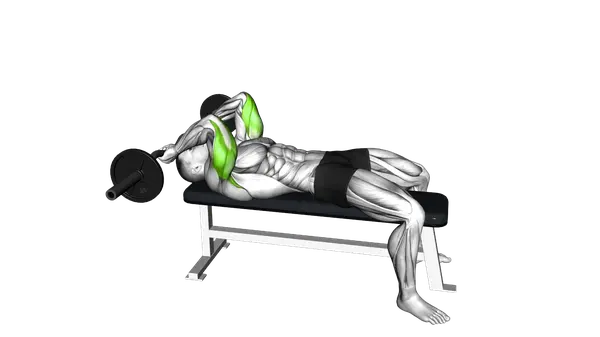
Ez Bar Lying Triceps Extension
The EZ Bar Lying Triceps Extension stands as a cornerstone movement for anyone serious about developing impressive triceps definition and strength. This intermediate-level exercise has earned its place in countless bodybuilding and strength training programs due to its remarkable effectiveness at isolating the triceps brachii (the three-headed muscle) that comprises roughly two-thirds of your upper arm mass. What makes this exercise particularly valuable is how it places the triceps under tension throughout the entire range of motion while minimizing stress on the wrists thanks to the angled grip of the EZ bar. The lying position creates a stable foundation that allows lifters to focus entirely on the controlled extension and contraction of the triceps without compensatory movements from other muscle groups. For bodybuilders, the EZ Bar Lying Triceps Extension delivers that coveted horseshoe appearance by targeting all three heads of the triceps. The overhead position particularly emphasizes the long head (the largest of the three) which is crucial for maximizing arm thickness when viewed from the side. Regular implementation of this movement contributes significantly to balanced arm development and improved pushing strength. Strength athletes appreciate this exercise for its carryover to pressing movements like the bench press and overhead press. By strengthening the triceps in their fully extended position, you're effectively addressing a common sticking point in many compound lifts. The isolated nature of this movement allows for targeted development that can help break through plateaus in your primary lifts. While relatively straightforward compared to complex compound movements, mastering the EZ Bar Lying Triceps Extension requires attention to proper form and weight selection. Many intermediate lifters find this exercise particularly beneficial when incorporated into the latter portion of their training sessions, after compound movements have pre-fatigued the larger muscle groups, allowing for more focused work on the triceps.
Why barbell training should be the foundation of every fitness routine
Training goals for barbell development
Barbell training delivers unmatched results for strength development because it allows progressive overload with precise weight increments. The bilateral nature of barbell movements creates stability that enables you to lift heavier loads safely, triggering maximum muscle growth and strength adaptation. Unlike machines or dumbbells, barbells engage stabilizing muscles throughout your core and supporting structures. This creates functional strength that transfers directly to athletic performance and daily activities. The compound nature of most barbell exercises means you work multiple muscle groups simultaneously, maximizing training efficiency and hormonal response. Many lifters make the mistake of focusing solely on isolation exercises or lighter weights. Barbell training addresses this by forcing your body to work as a integrated unit, building the kind of dense muscle mass and raw strength that comes from handling heavy loads through full ranges of motion.
Essential movements every athlete and fitness enthusiast should master
Best barbell exercises for strength and size
The barbell bench press remains the ultimate upper body strength builder, targeting chest, shoulders, and triceps while allowing for heavy progressive overload. The barbell bent over row provides the perfect counterbalance, developing your entire posterior chain with impressive pulling strength. Lower body development centers around the barbell front squat and bulgarian split squat, which build incredible leg strength and muscle mass. These movements challenge your quads, glutes, and core while improving functional movement patterns that enhance athletic performance. Explosive power comes from Olympic lifting variations like the barbell clean and jerk, which develops total-body coordination and power output. The barbell good morning and barbell hip thrust target often-neglected posterior chain muscles that are crucial for posture and injury prevention.
Training plans featuring barbell exercises
Barbell exercises form the cornerstone of effective training splits, whether you follow upper/lower, push/pull/legs, or full-body routines. The barbell bench press and barbell standing military press anchor pushing sessions, while the barbell bent over row leads pulling workouts.Training frequency typically involves 3-4 barbell sessions weekly, allowing major movement patterns to be trained multiple times per week. This frequency optimizes strength development while providing adequate recovery between intense sessions. Progressive overload follows established principles: beginners focus on mastering movement quality with the empty barbell before adding weight. Intermediate lifters benefit from linear progression, adding 2.5-5kg weekly to major lifts like the barbell front squat and barbell bench press.
Create your personal training program in the app tailored to your goals, fitness level, and schedule. Your plan will include the most effective barbell exercises and show you exactly how to integrate them into your weekly training split.
Frequently asked questions about barbell exercises
Focus on perfect form before adding weight, especially with complex movements like the barbell clean and jerk. Use progressive overload by adding small increments consistently rather than making large jumps. Combine compound exercises like the barbell hip thrust with isolation work like the ez bar lying triceps extension for complete development. Prioritize recovery and consistency for long-term success.
Yes, a barbell provides everything needed for serious muscle development. The progressive overload potential and compound movement patterns stimulate maximum muscle growth. Studies show barbell exercises activate more muscle fibers than machine alternatives, leading to superior strength and size gains when combined with proper nutrition and recovery.
Barbell exercises can effectively target every major muscle group. Chest development comes from the barbell bench press and barbell incline bench press, while back strength builds through the barbell bent over row and barbell good morning. Legs respond to the barbell front squat and bulgarian split squat, and arms develop with the ez bar preacher curl and barbell wrist curl. The barbell clean and jerk provides total-body conditioning.
Most lifters benefit from 3-4 barbell training sessions weekly, allowing major movement patterns to be trained 2-3 times per week. This frequency maximizes the muscle protein synthesis response while providing adequate recovery time. Beginners might start with 2-3 sessions to allow proper adaptation to the movement demands.
The most effective barbell workouts center around compound movements like the barbell bench press, barbell front squat, and barbell bent over row. Upper/lower splits work well, with pressing exercises like the barbell standing military press paired with pulling movements. Olympic variations like the barbell clean and jerk can anchor explosive power sessions.
Integrate barbell workouts into full-body and split routines
